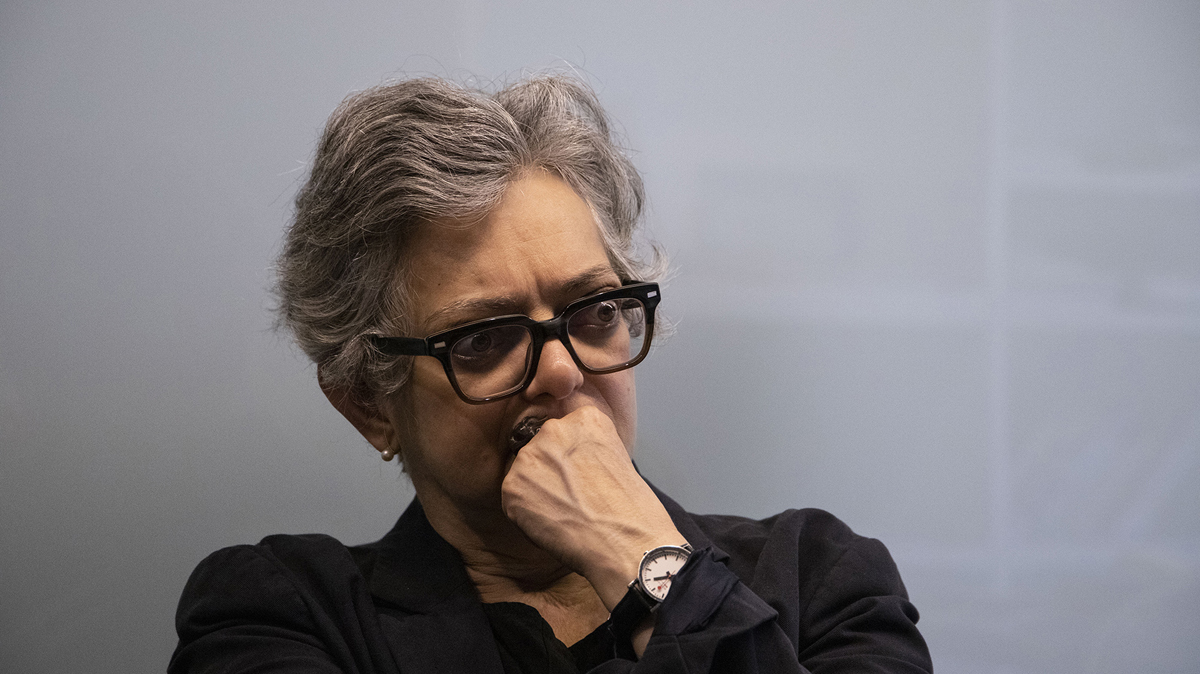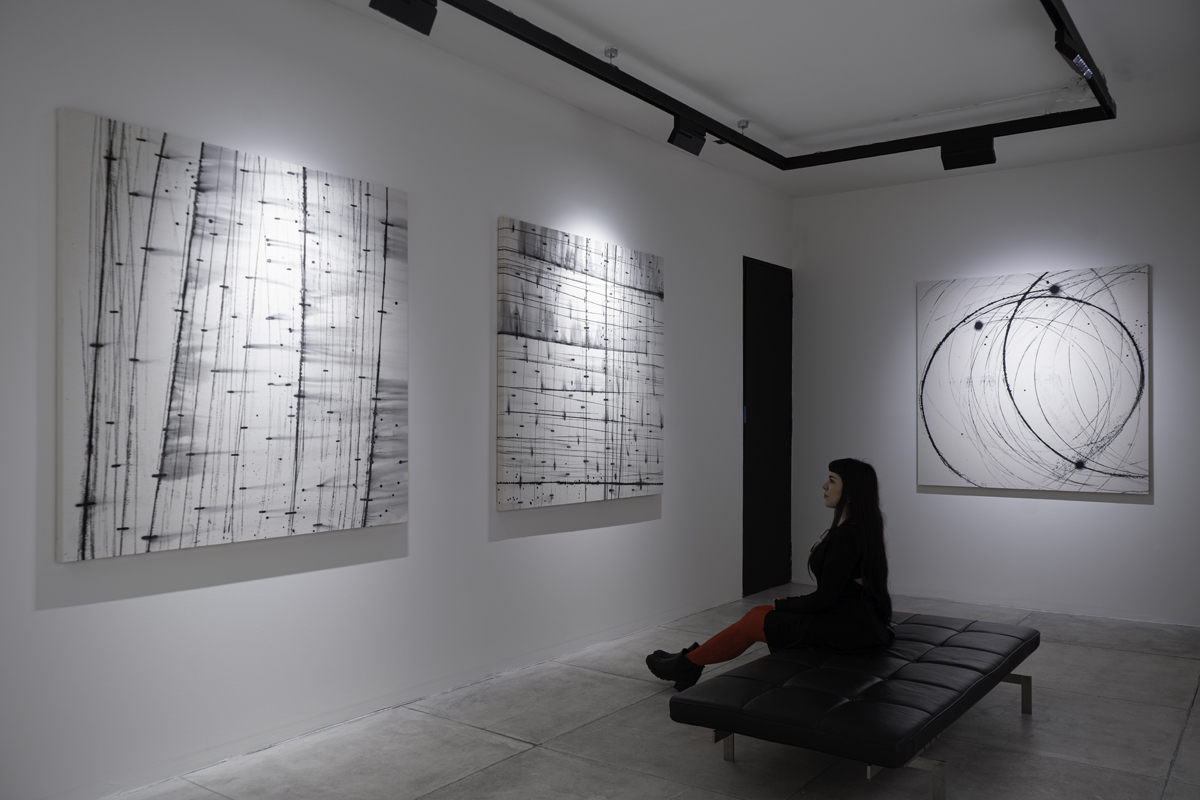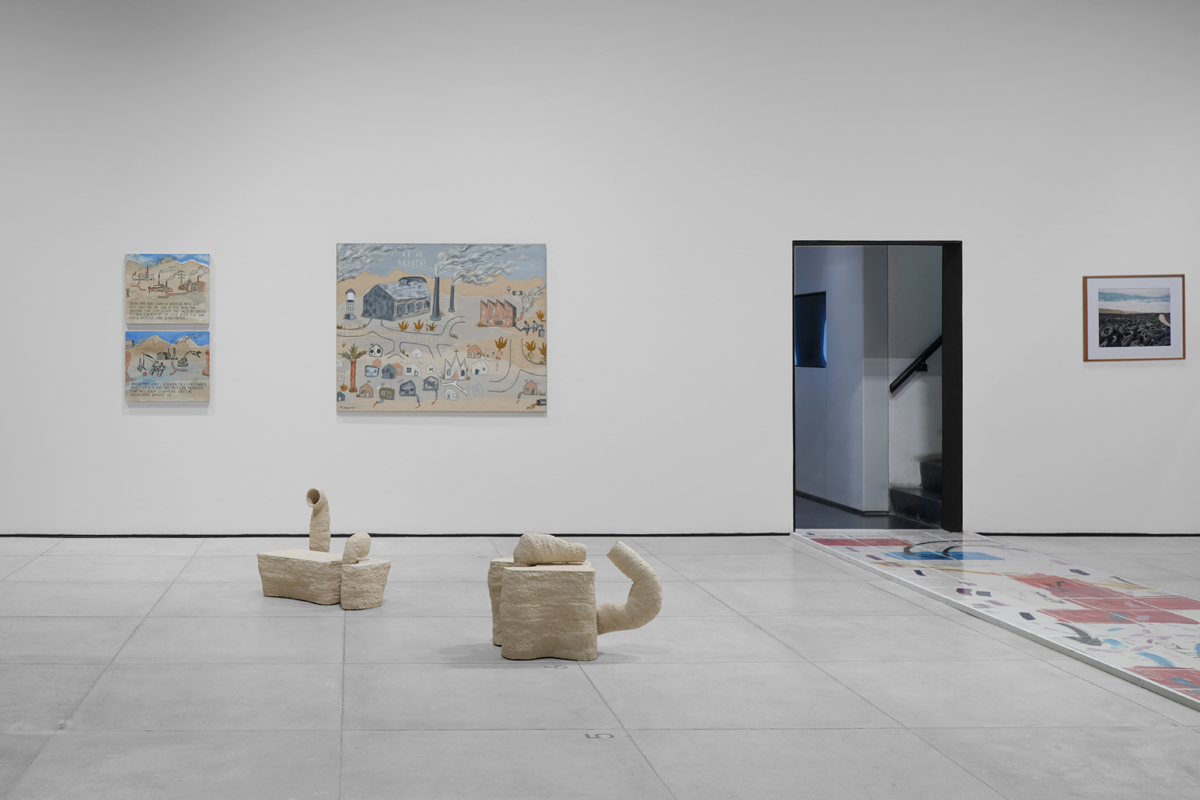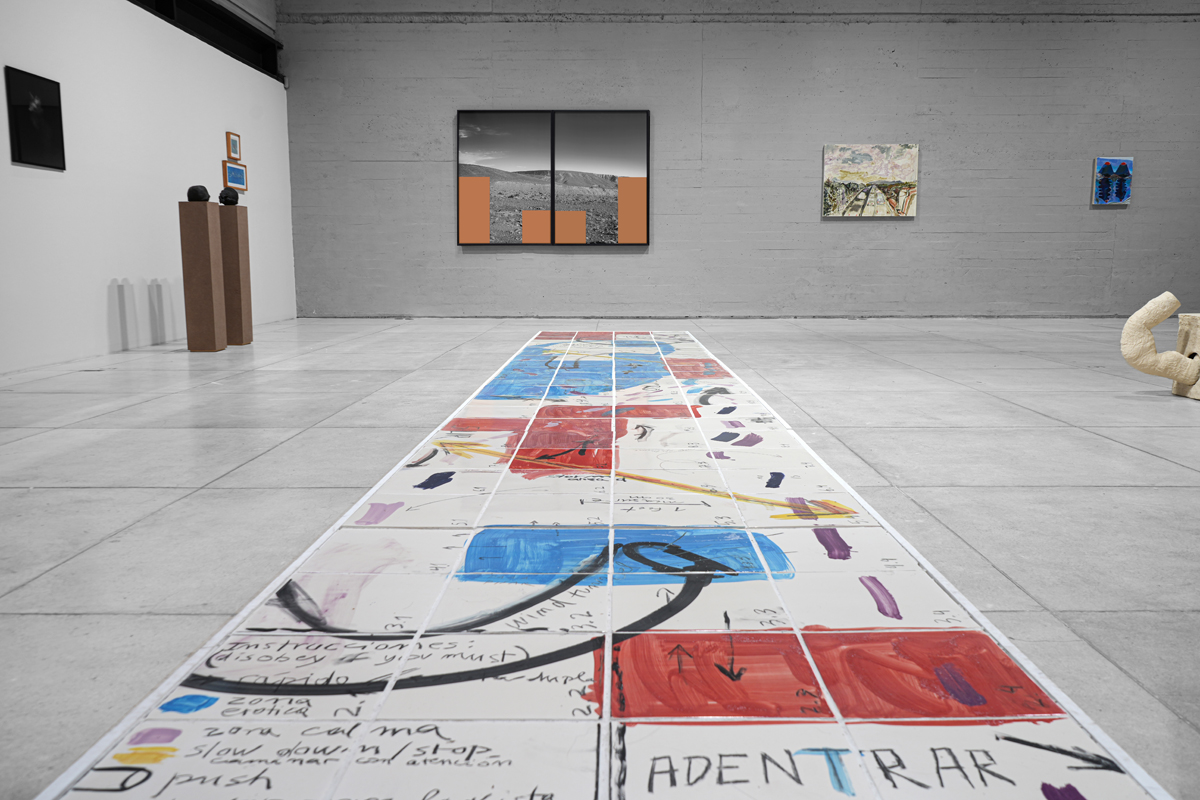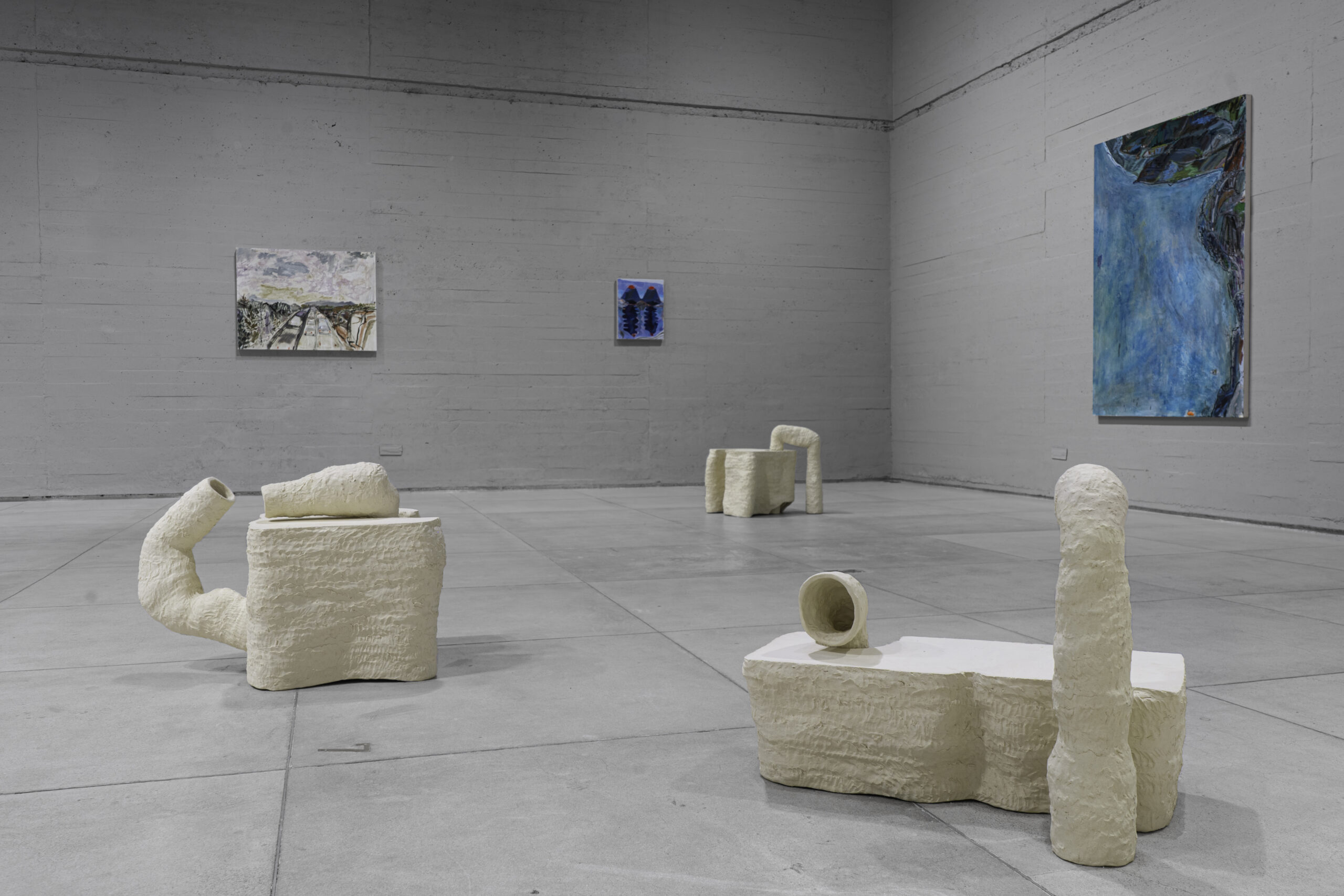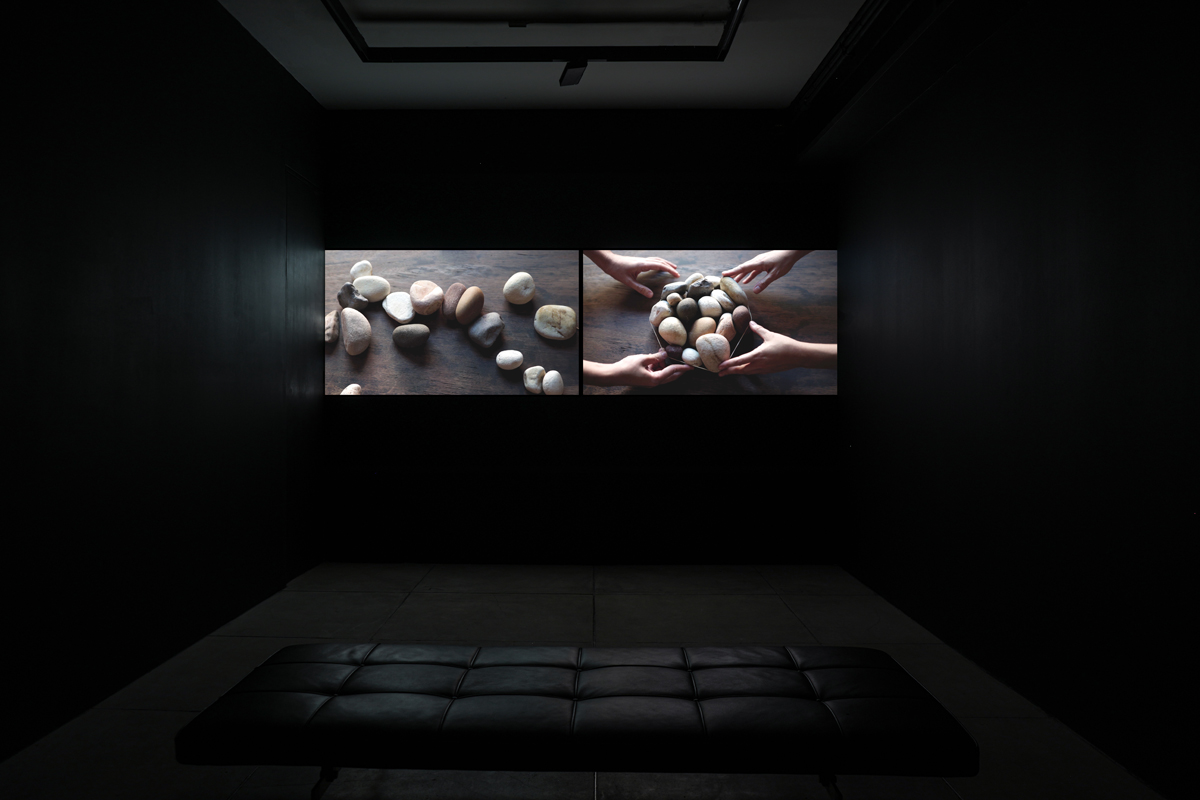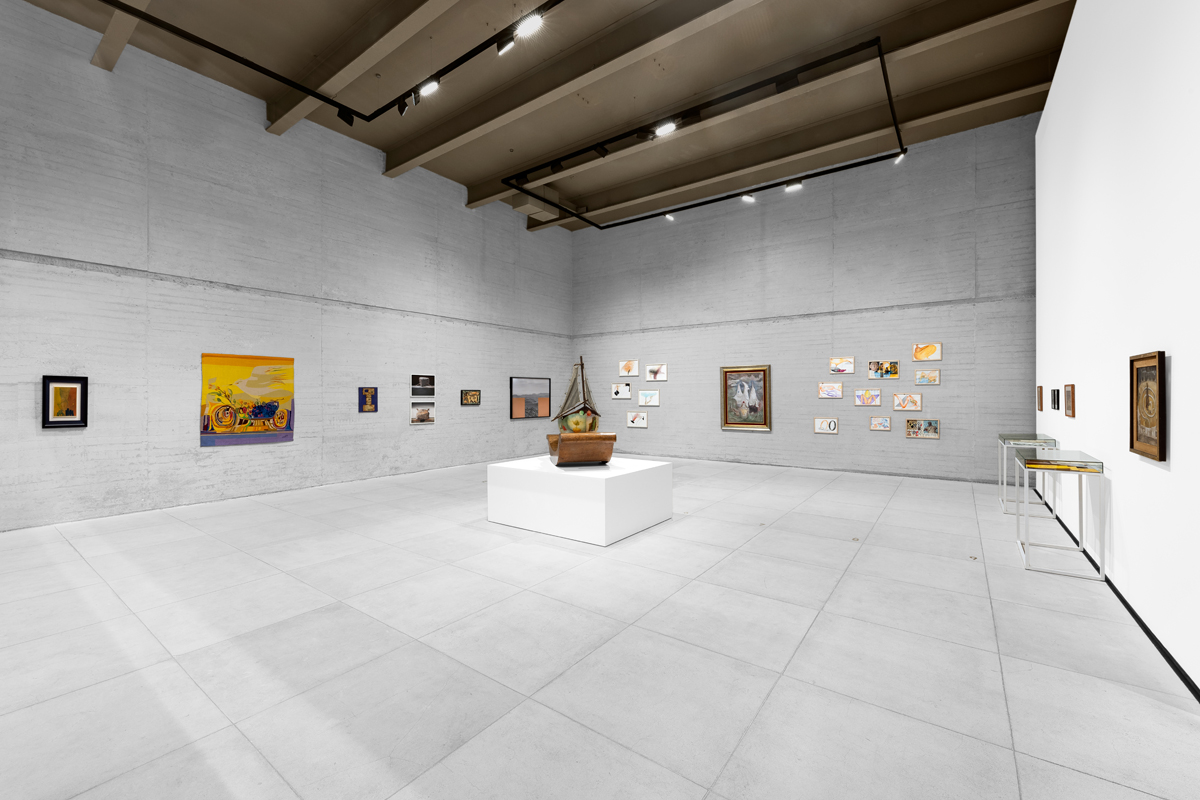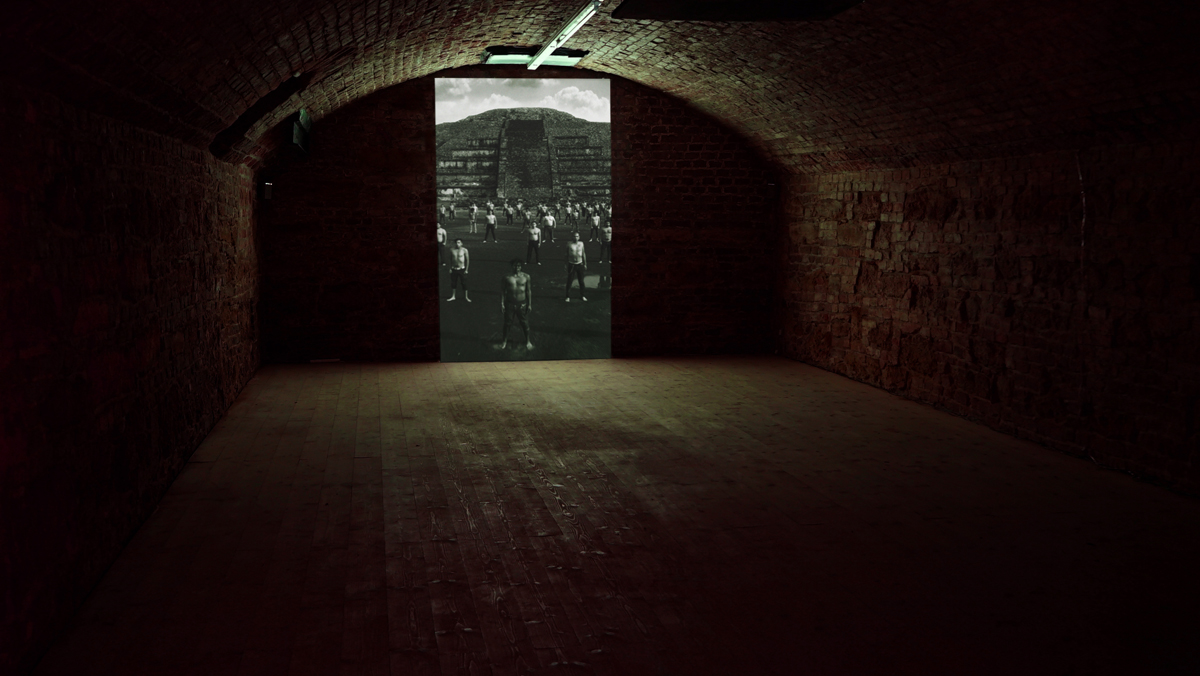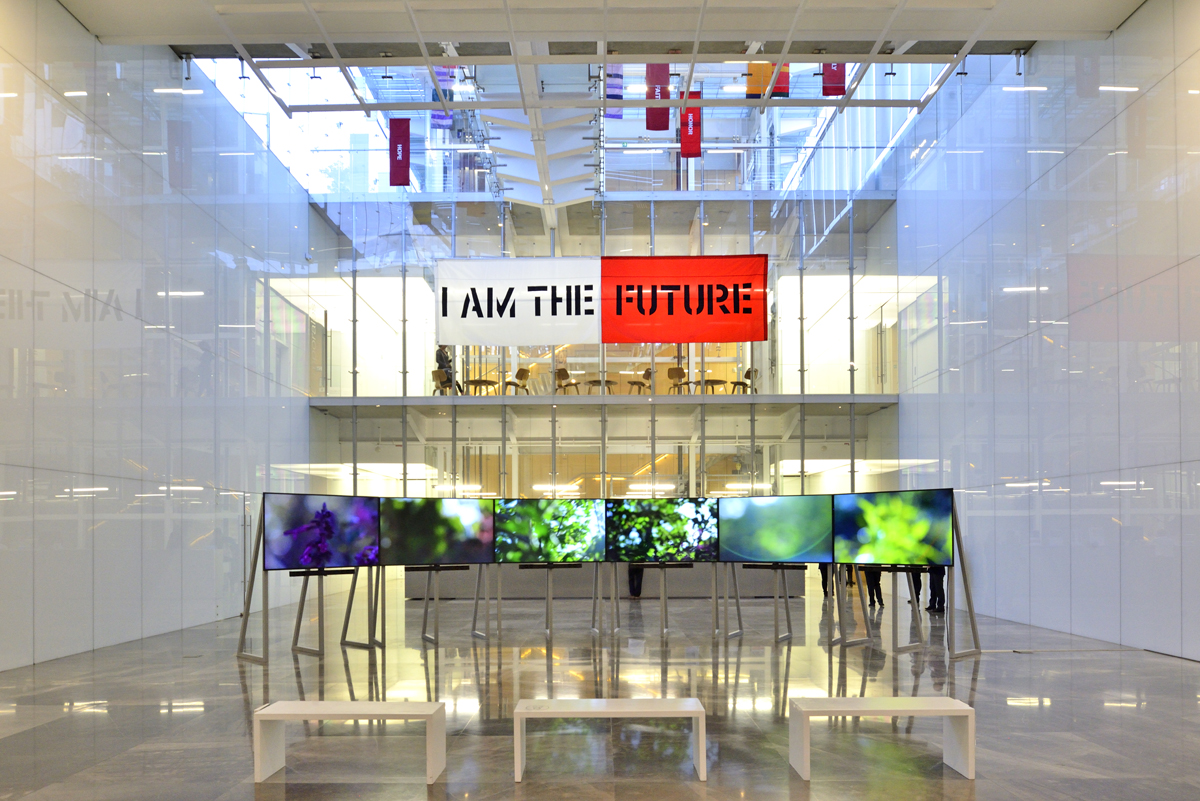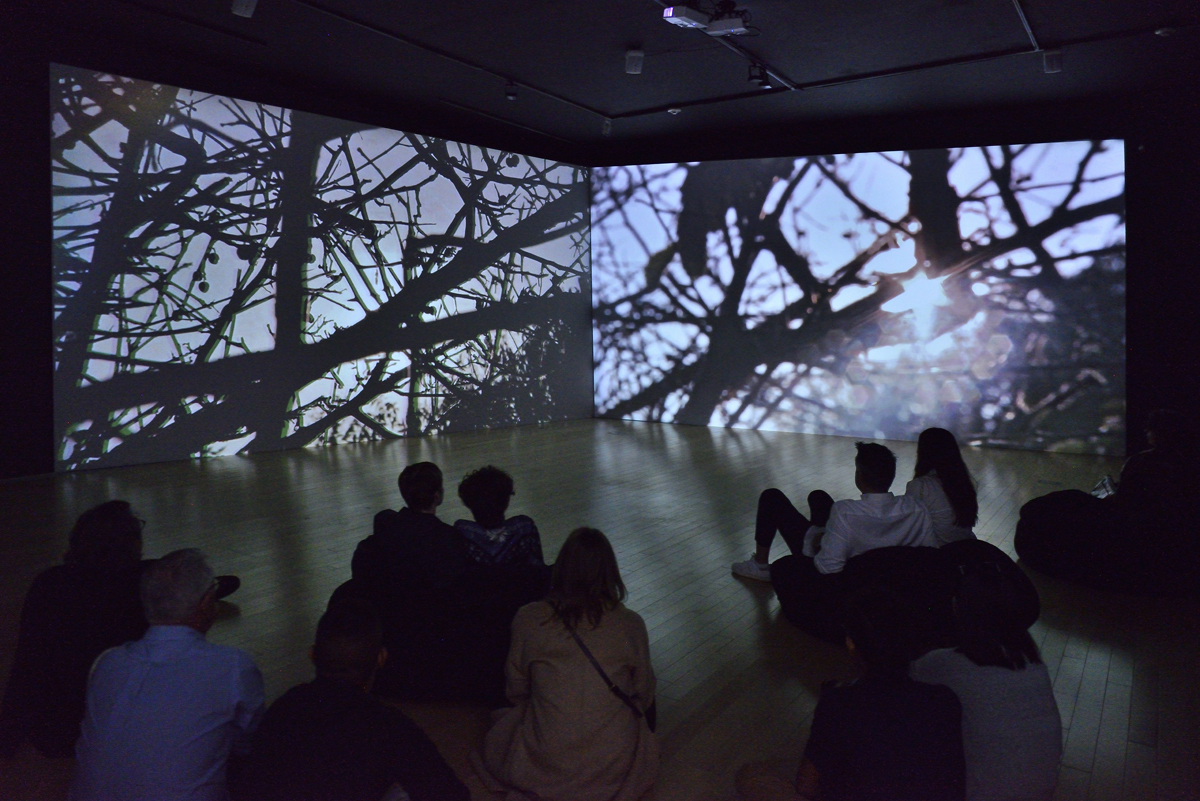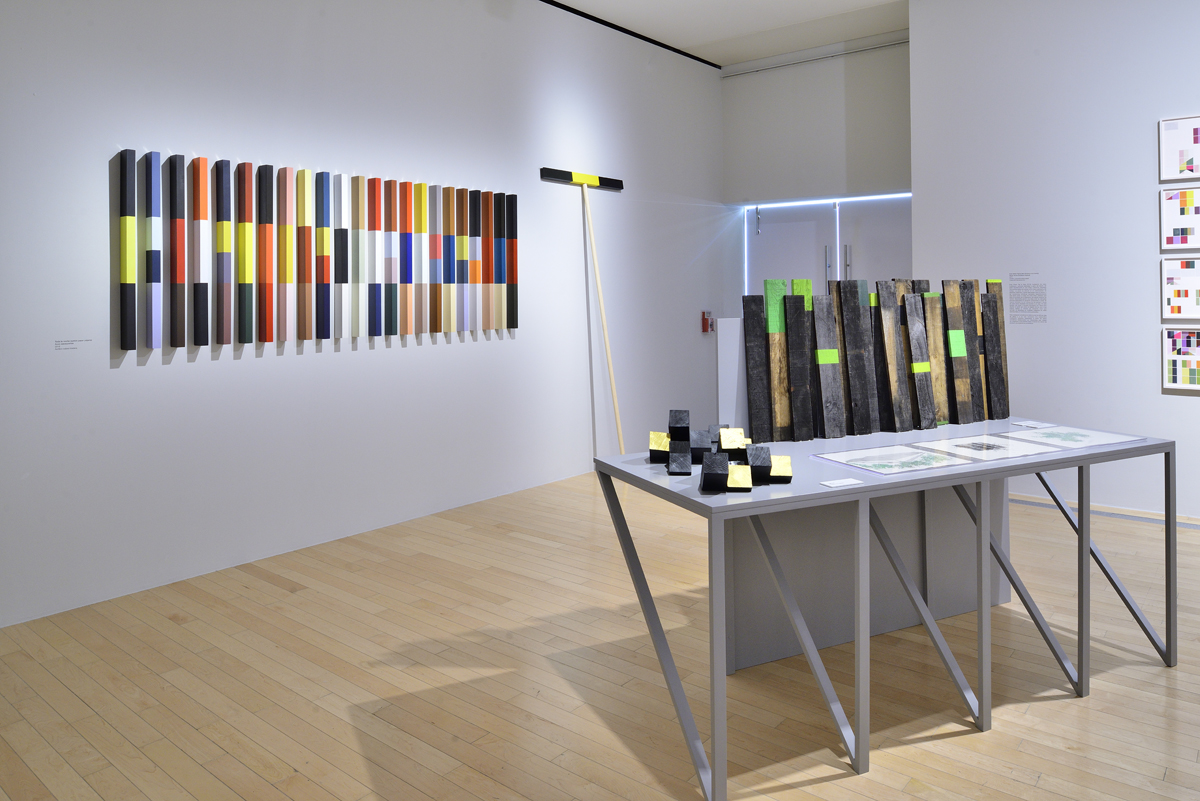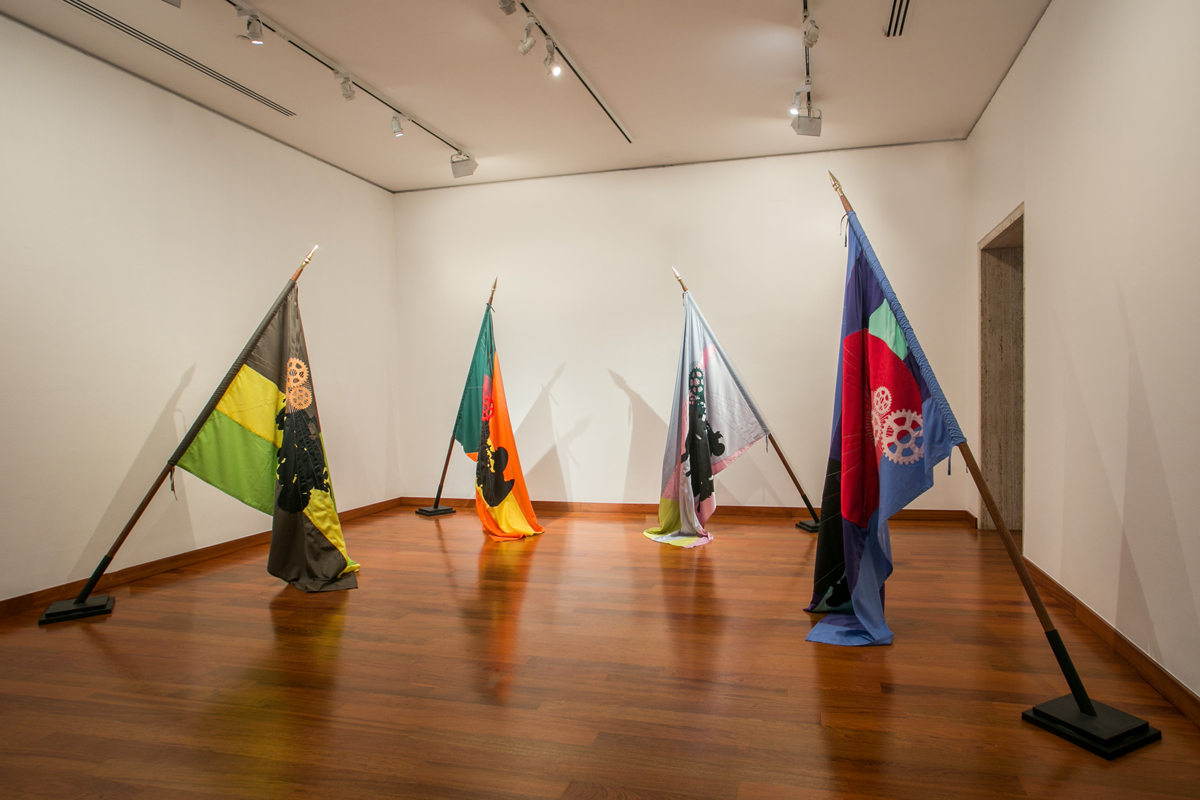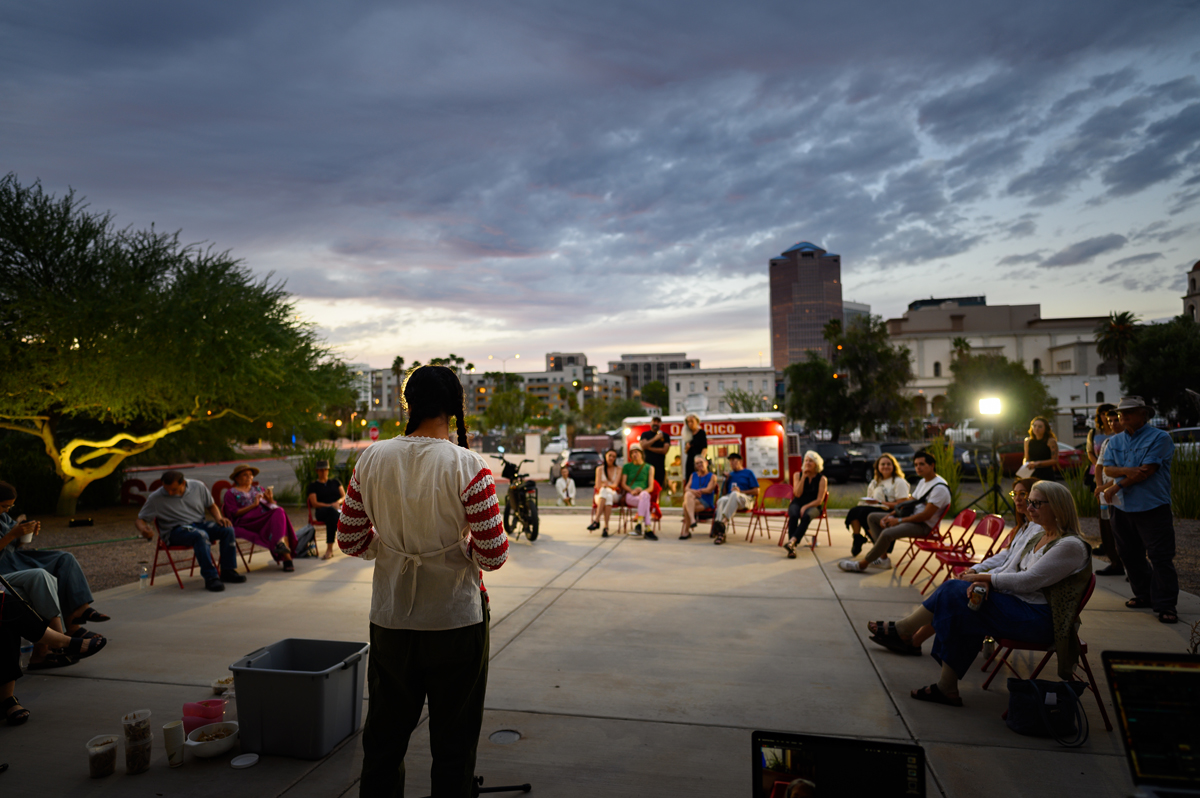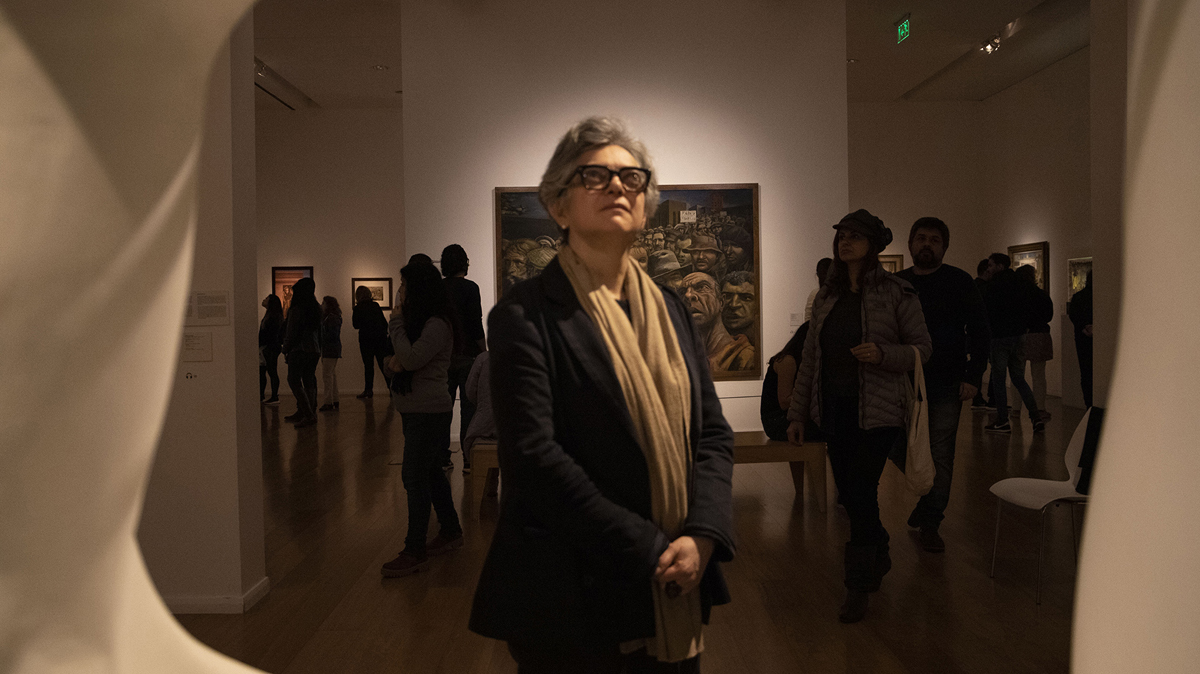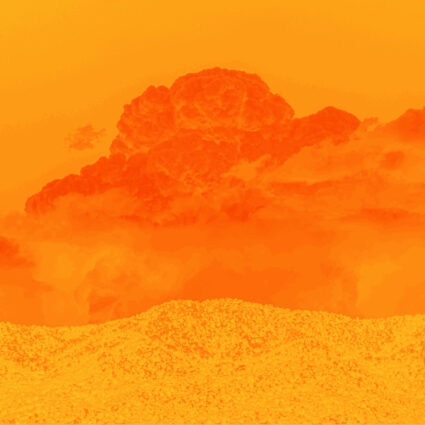Venezuelan curator Gabriela Rangel and her international circle discuss her “double viewpoint” of the Global North and South, and what it means for MOCA Tucson.
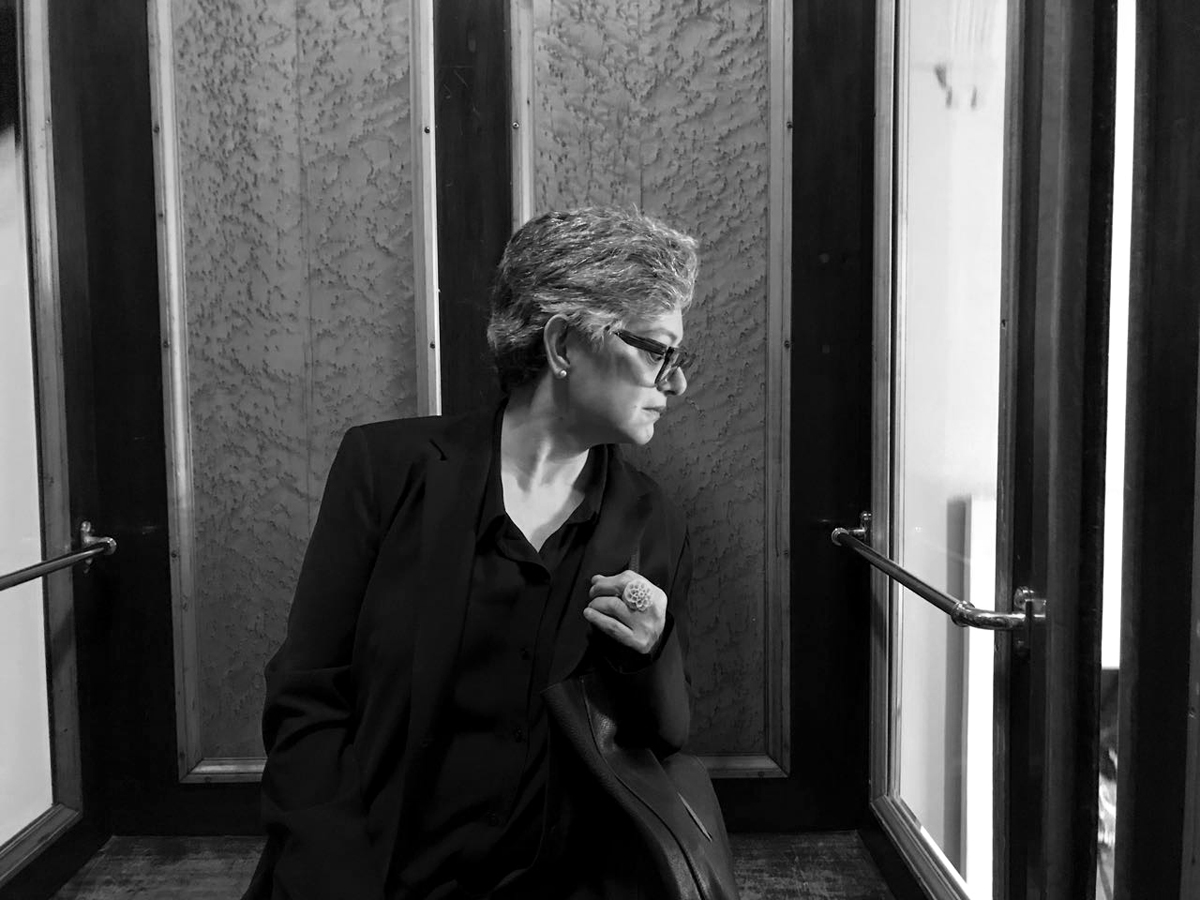
In the fall of 2017, Venezuelan curator Gabriela Rangel—who on September 1 will begin her tenure as executive director at MOCA Tucson—was in Vienna with Mexican artist Erick Meyenberg. “We were there for a show she was curating,” Meyenberg says. “We stepped in an elevator, and suddenly I looked at her, and she was in this pose. And I thought it was just very her—so I took a picture with my phone, and it was very spontaneous.”
Meyenberg’s photograph illustrated MOCA Tucson’s announcement of Rangel’s appointment, and she has used it often throughout her career—an unrehearsed headshot captured by a colleague and close friend. With her face turned rightwards in a near-perfect profile, she peers out the window of a wainscoted elevator, dressed in an unassuming dark suit. Her heavy black frames, firmly set jaw, and hand caught in a soft fist above her breast are testaments to a character described most often as “formidable” among the many Latin American artists, researchers, and critics who were first to applaud the news of her appointment in Arizona.
“Gabriela has contributed decisively to the promotion of Latin American art in the United States throughout this century,” said Natalia Majluf, an art historian and former director of the Lima Art Museum (MALI) in Peru. After completing degrees in film, communications, and curatorial studies in three different countries—Cuba, Venezuela, and the United States, respectively—Rangel began a career as a specialist in Latin American contemporary art, first at the Museum of Fine Arts, Houston, and later as director and chief curator of Visual Arts at Americas Society in New York, where she forged a reputation as a perceptive and diligent leader. “She’s a very sharp observer of the contemporary art scene and a true researcher,” says Cuban American artist Coco Fusco. “She knows more about post-war Latin American art than most art professionals in the United States.”
I don’t think her perspective is divided between North and South. I think it’s rather that she alternates positions.
Rangel’s intellect, stamina, and zeal for the visual arts are widely remarked upon among her colleagues, but it is the ease with which she bridges the Global North and South that distinguishes her among other art agents working across the Americas. “I feel very bicultural. I am a South American who has lived in the United States for many years,” Rangel told me in an interview discussing her appointment at MOCA Tucson. “I don’t think her perspective is divided between North and South,” Majluf elaborated. “I think it’s rather that she alternates positions, and that double viewpoint has been very productive.” This strength aligns with MOCA’s institutional ambition to become a reference point in programming about the border, one of the aspects about Tucson which drew Rangel to the post.
While at Americas Society—and later at MALBA, the Museum of Latin American Art in Buenos Aires—Rangel built a professional network that stretches across the United States, the Caribbean, South America, and is today especially strong in Mexico City, a global cultural center that has attracted a number of her past colleagues in South America and the United States and where she has lived part-time over the past two years, working as artistic director at Galería RGR. “Mexico City is the place where the discussion about art is happening. It is a country in itself,” Rangel said. “There, I discovered I am a public servant. I am not a person for the commercial world. I’ve understood that better now.”
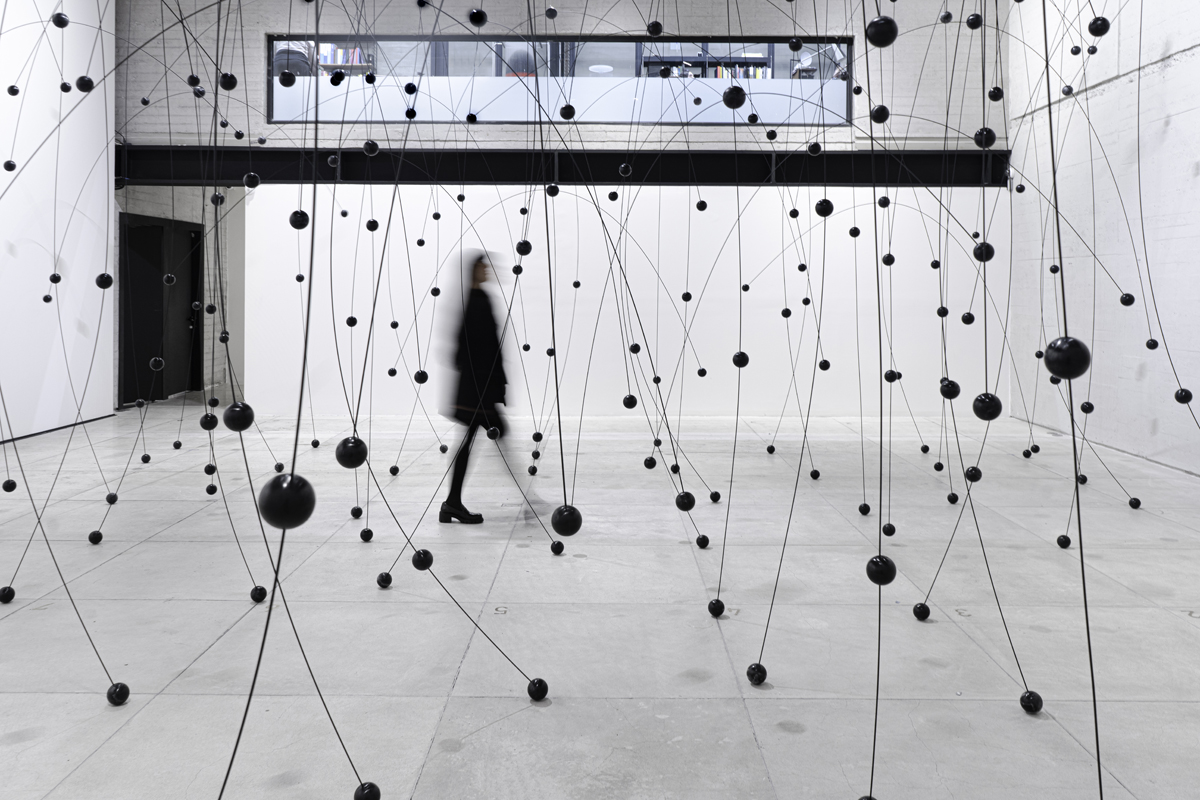
This vocation is clear as she discusses her future work at MOCA Tucson. “We live in very complex times in the United States, and the world,” Rangel states earnestly. “Sometimes we think that art is a means for peace, but it never has been.” For her, art museums are not spaces for respite from the problems of the world, but rather places of encounter. “I want the public to find a place [at MOCA] where they can ask themselves questions that may help them live a better life. I want there to be reliable companionship here.” It is this sense of persistent trustworthiness that Rangel is most eager to develop for MOCA: “One has to build community which, like everything, is a very fragile thing. It involves enormous effort from whoever is trying to do it.”
Unlike its recent leaders, who have skewed younger and American, Rangel will arrive at MOCA Tucson with an international reputation and decades of successful experience in art capitals around the world. Yet, for all that worldliness, Rangel’s vision for MOCA is one in which its relevance should be felt primarily at a local and regional level, in a cultural ecosystem (Arizona’s) which she can already describe at length, and considers conveniently unconstrained by global trends or crazes in New York. She is self-aware and generous when discussing the institution’s achievements, stressing admiringly that in recent years MOCA has secured financial support from all of the large art funders (including the Teiger, Ford, and Warhol Foundations) and praising the quality of the team she has been hired to lead, which she describes as “marvelous.”
Sometimes we think that art is a means for peace, but it never has been.
Adjusting to life in the Sonoran Desert after decades at the center of the art world will involve a significant change for Rangel, whose cultural appetite is voracious. “She goes to see everything,” says María Minera, a top art critic in Mexico and close friend. “She goes to museums, or exhibitions, or the movies, every single day. Nobody does that! For her, it’s her main sustenance. She will miss that.” Others imagine she might welcome the change: Meyenberg says, “I think it will suit her to bring down that pace she maintains, which can sometimes operate as noise. She really loves working on publications, and the research process for books. This change will favor that.”
However Rangel adapts, there seems no doubt among those who count her as a friend and colleague that there are great times ahead for MOCA Tucson under her leadership. “She has a great sense of how to understand the present, and recognize the themes that are relevant now. This is her great talent, and what has allowed her to build memorable programming, which she knows how to do so well,” said Majluf. Fusco put it more simply: “MOCA Tucson is very lucky to count on Gabriela.”
